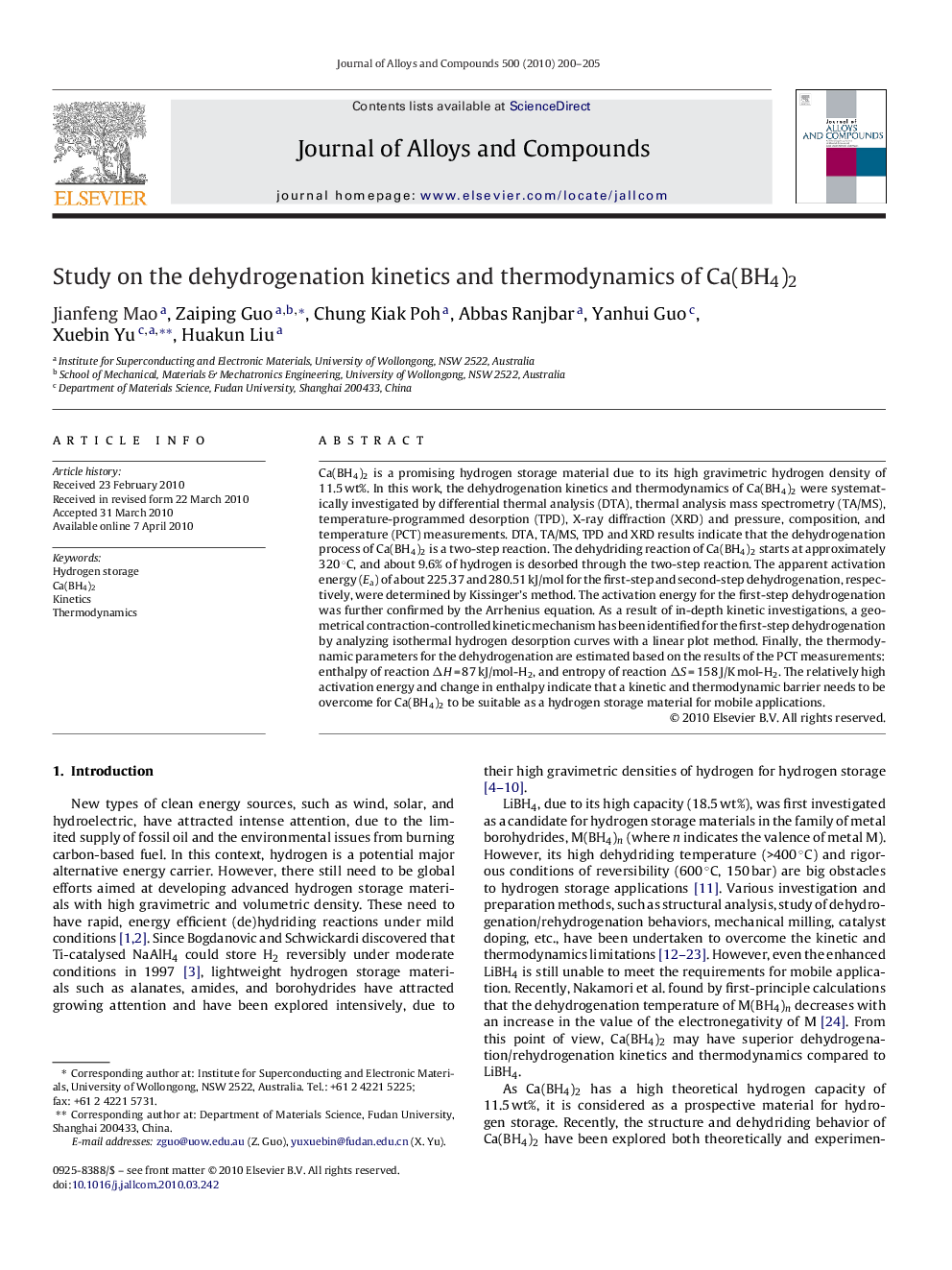| Article ID | Journal | Published Year | Pages | File Type |
|---|---|---|---|---|
| 1621119 | Journal of Alloys and Compounds | 2010 | 6 Pages |
Ca(BH4)2 is a promising hydrogen storage material due to its high gravimetric hydrogen density of 11.5 wt%. In this work, the dehydrogenation kinetics and thermodynamics of Ca(BH4)2 were systematically investigated by differential thermal analysis (DTA), thermal analysis mass spectrometry (TA/MS), temperature-programmed desorption (TPD), X-ray diffraction (XRD) and pressure, composition, and temperature (PCT) measurements. DTA, TA/MS, TPD and XRD results indicate that the dehydrogenation process of Ca(BH4)2 is a two-step reaction. The dehydriding reaction of Ca(BH4)2 starts at approximately 320 °C, and about 9.6% of hydrogen is desorbed through the two-step reaction. The apparent activation energy (Ea) of about 225.37 and 280.51 kJ/mol for the first-step and second-step dehydrogenation, respectively, were determined by Kissinger's method. The activation energy for the first-step dehydrogenation was further confirmed by the Arrhenius equation. As a result of in-depth kinetic investigations, a geometrical contraction-controlled kinetic mechanism has been identified for the first-step dehydrogenation by analyzing isothermal hydrogen desorption curves with a linear plot method. Finally, the thermodynamic parameters for the dehydrogenation are estimated based on the results of the PCT measurements: enthalpy of reaction ΔH = 87 kJ/mol-H2, and entropy of reaction ΔS = 158 J/K mol-H2. The relatively high activation energy and change in enthalpy indicate that a kinetic and thermodynamic barrier needs to be overcome for Ca(BH4)2 to be suitable as a hydrogen storage material for mobile applications.
